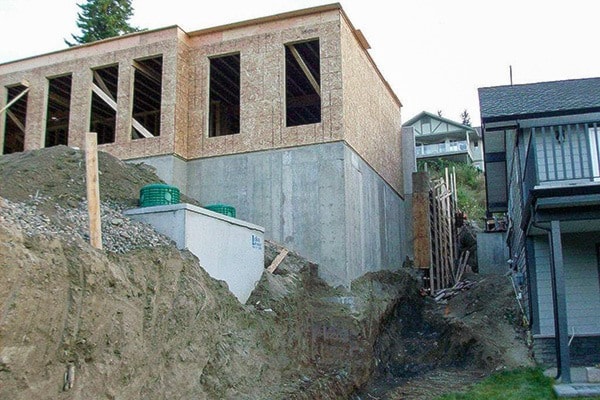Columbia Shuswap Regional District directors have agreed to consult with electoral area constituents before moving ahead with, or expanding, building inspection services.
A much-discussed and often contentious subject at the board level, directors in Area B, C South Shuswap and E agreed in principle to move ahead with building inspection in October 2016. However, at the December electoral area directors’ meeting, Area C director Paul Demenok withdrew his support at this time.
From 2013 through 2016, there were 917 complaints to bylaw officers in the regional district – 41 per cent of them in Electoral Area C South Shuswap. Forty-one per cent of the complaints in Area C involved planning issues, which were a large proportion of the other electoral areas as well – 74 per cent of the complaints in Area B Rural Revelstoke, 45 per cent in Area E Rural Sicamous/Malakwa and 49 per cent in Area F North Shuswap, which already has limited bylaw inspection.
In 2016, the legal costs solely for bylaw enforcement in the regional district was $95,143.
“During the January budget meeting, someone asked how much of that legal expense could have been avoided if we had building inspection, and the manager of development services said ‘all of it…’” says CSRD financial manager Jodi Pierce. “By spending it on legal, it doesn’t provide any service, whereas by spending on building inspection, it provides a direct benefit. It will ensure, at least in theory, that buildings are built in accordance with all of our bylaws and the building regulations.”
When the issue was brought to CSRD’s Jan. 19 regular board meeting in Salmon Arm, Demenok explained he was not ready to roll with building inspection, given the number of projects currently underway in Area C.
“I would like staff to work out the bugs and undertake more public education before moving forward,” he said, noting his concern for the potential cost to taxpayers in Area C.
CSRD administrator Charles Hamilton said he was somewhat surprised by Demenok’s decision and concerned about the viability of creating a service for the three smaller electoral areas.
“The whole scheme was predicated on Area C being on board; I’m not sure we can do this,” Hamilton said. “It’s a little frustrating. I have been working on this file for eight years and I don’t want to roll out something that’s not going to be sustainable.”
Since the January meeting, Demenok has explained he is “fully supportive” of building inspection because it reduces bylaw enforcement by 50 per cent.
“We know right now that bylaw enforcement is overloaded with files and cases and they can’t keep up,” he said, pointing out there have been a number of problems in Area C that have led to expensive court cases, all of which could have been prevented.
Asked when he sees building inspection appearing on Area C’s “to-do” list, Demenok said maybe 2019 or 2020. In the meantime, he believes a building inspection service would still work well without Area C.
But both CSRD chair and electoral Area E director Rhona Martin and Area B director Loni Parker see problems with Demenok’s withdrawal.
“We will be having a good look at this; the reason it perked to the top was the amount of money it’s costing us for enforcement,” said Martin, acknowledging building inspection does not have a huge appeal in rural areas. “I am hoping, when we’ve spent time and talked to people, at the end of the day, we come up with something reasonable. And we need the benefit of everybody being involved.”
Martin says CSRD does not have the financial or staff resources to continue paying out so much for bylaw enforcement.
Building inspection is budgeted for implementation in 2018; but it is still subject to a review, says Pierce.
